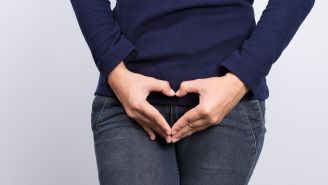Updated on January 17, 2023.
As people age, they may notice that they’re gaining weight—even though their diet and activity level hasn’t changed. In many cases, the extra weight around the belly or midsection may be more obvious.
Why does this happen? And are there specific strategies for losing weight after 40? Here are a few possible explanations that could help you understand why this happens and what may help.
Visceral fat vs. subcutaneous fat
Subcutaneous fat lies just beneath your epidermis (top skin layer) and dermis (middle skin layer). Adding to this are extra layers of visceral fat housed deeper within your abdomen.
The more subcutaneous fat you have, the more visceral fat you usually have. But it’s the visceral fat that can impact your health the most. It surrounds your internal organs and raises your risk of breathing issues and health conditions such as:
- Diabetes
- High blood pressure
- High cholesterol
- Obesity
- Some cancers such as gallbladder, pancreatic, endometrial, and breast cancer
Weight gain and the increase in body fat are likely due to multiple factors that usually start to take effect as you approach and enter the transition period before menopause called perimenopause. For many people, this period starts in their 40s. These factors have a way of rewriting the rules of weight gain and loss after 40.
Belly fat, rising blood sugars, and insulin resistance
Waning levels of the hormone estrogen can impair your body’s ability to use starches and blood glucose (sugar) effectively. This can amplify your risk for insulin resistance, which means your body ignores signals to absorb and lower your blood sugar.
Because insulin resistance can interfere with your ability to burn fat, you may accumulate more body fat, especially in your belly. Other hormone shifts, including rising levels of the adrenal stress hormone cortisol, send fat to your belly for storage. And compared to other body fat, belly fat can be harder on your body.
Abdominal fat functions as an endocrine organ itself with some of the most metabolically active tissues. It can produce hormones and substances linked to endocrine and metabolic conditions, such as insulin resistance, prediabetes, and type 2 diabetes.
What can help: A 2022 review of studies published in Nutrients found certain strategies may help with insulin resistance. One of these strategies involves following the Meal Sequence Pyramid Per Satiety Response, which has been shown to improve insulin sensitivity and the body’s response to glucose. The pyramid recommends eating more foods from the base of the pyramid while eating less from the top.
In order of what to eat first and most, have:
- Low-energy dense (low-calorie) foods with high water content such as dark, leafy greens and berries
- Light dairy foods, boiled eggs, poultry, and seafood (eaten with veggies)
- Lean meat or plant proteins
- Whole grains, legumes, and pulses
The narrow peak of the pyramid includes foods to eat less often and in much smaller portions, if any. These include processed, refined, and fatty:
- Meats
- Grain and flour products such as breads, cereals, and baked goods
- Cooking and seasoning oils, nuts, and seeds
- Chips and other processed snacks
- Sugary drinks and sweets
Findings from this review also suggest the following may help:
- Eat foods and meals high in fiber and lean proteins and low in saturated fats and carbohydrates. Talk with your healthcare provider (HCP) or registered dietitian nutritionist (RDN) to figure out how many daily carbs, fats, proteins, and calories would best meet your health needs, body size, and activity level.
- Eat your largest or heaviest meal and most of your carbs at lunch time.
- Eat at regular intervals throughout the day, whether you opt for two to three regularly sized meals or five to six smaller meals, to help keep your blood sugar, hunger, and cravings in check.
- Avoid eating too late in the day, especially late at night. Eating at this time can spike your blood sugar before bedtime and increase the likelihood it’ll remain high while you sleep and your body’s resting.
Before trying these strategies or making significant changes to your diet, have a thorough discussion with your HCP about your weight goals and options for losing weight and body fat. Also consider working with your HCP or RDN on a customized eating plan that’s tailored to your food preferences and health needs and goals.
Shrinking muscle mass and insulin resistance
Sarcopenia describes the loss of skeletal muscle mass, strength, and physical performance. It starts around 30 years-old, with muscle mass decreasing 2 to 7 percent every 10 years and accelerating after age 60.
After menopause, drops in estrogen accelerate sarcopenia and the loss of muscle mass by 0.6 percent each year. When these occur, your risk of sarcopenic obesity also goes up. This health condition combines the harmful effects of sarcopenia and obesity.
Skeletal muscles make up around 30 to 40 percent of your total body mass or weight, but they use roughly 80 to 90 percent of your body’s glucose supply. They also secrete hormones called myokines when your muscles move and contract.
Myokines interact with other body tissues and organs to support metabolism. They also help:
- Reduce inflammation
- Prevent fat accumulation
- Keep sarcopenia from getting worse
Losing muscle mass impacts myokine production. This contributes to sarcopenic obesity and insulin resistance.
These conditions cause you to lose more muscle mass and gain more body fat. As these occur, dysglycemia (abnormal blood sugar levels) and insulin resistance worsens. And this cycle can continue without proper intervention to stop it.
What can help: Physical activity can help change your body composition. It boosts your metabolism by increasing the number and size of your mitochondria. These tiny but mighty organelles (miniature organs within your cells) convert food into usable energy in the form of a molecule called adenosine triphosphate (ATP).
Being physically active on a regular basis helps you build lean muscle mass, increase strength, improve physical performance, and reduce your:
- Body fat percentage. Portion of your total body mass or weight that’s adipose (fat) tissue, often expressed as percent body fat
- Body mass index. Measure of body fat calculated using your height and weight
- Waist-to-hip ratio. Proportion of fat stored around your waist compared to your hips
Step up your cardio activity
Aim to get at least one of the following each week:
- 150 to 300 minutes of moderate-intensity cardio such as walking briskly (2.5 to 4 miles per hour)
- 75 to 150 minutes of vigorous-intensity cardio such jogging or running (6 miles per hour or faster)
- Equal mix of moderate-to-vigorous physical activity (MVPA)
To help with losing weight after 40, breaking through weight loss plateaus, and keeping excess weight off long-term, some guidelines recommend upping your MVPA to 200 to 300 minutes a week. Be sure to start slowly and gradually build up the pace, intensity, and duration of your workouts.
Add strength-training exercises
In addition to your cardio workouts, strength or resistance train at least two days a week. Focus on a different muscle group during each session.
Be sure to work out all your major muscle groups each week. These include your arms, legs, chest, shoulders, hips, back, and abdomen.
Lift weights using weight machines or free weights such as dumbbells and kettlebells. Or use resistance bands or bodyweight exercises such as push-ups, squats, planks, and sit-ups. Pilates and barre are also strength-training workouts that use your body weight or light free weights to build long, lean muscles and strengthen your core.
Changing hormones and slowing metabolism
Your estrogen levels drop before, during, and after menopause. This combined with higher cortisol levels slow your metabolism, or the rate at which your body converts stored energy to working energy.
What can help: Budging the fat becomes harder but not impossible with lifestyle changes, such as getting physically active on a regular basis and following a nourishing eating plan.
Hormone replacement therapy (HRT) may also be an option. The treatment may help balance your hormones and boost your resting metabolism. It may also slow weight gain and trim total and visceral fat.
But HRT may not be the right treatment for everyone. It’s best to talk with your HCP about the benefits and risks of HRT and decide together if the treatment would be safe and appropriate for your health goals and needs.
Lack of restful sleep
Not getting enough restful sleep undermines your body's ability to burn fat and lose weight, even if you're cutting your daily calories and staying physically active. Around 40 to 60 percent of people experience sleep disturbances during perimenopause and during and after menopause, according to a 2022 review of studies published in Menopause.
Dips in estrogen plus jumps in luteinizing hormone can alter your body’s circadian rhythms, most notably its sleep-wake cycle. This coupled with common symptoms experienced during this life stage, such as hot flashes and night sweats, can make it harder for you to get quality sleep that leaves you feeling fully rested and restored upon waking.
What can help: Start with improving your sleep habits. For instance, you can try to:
- Stick to a routine sleep schedule, that is go to bed and wake up within one hour of your regular sleep and wake times.
- Limit or avoid substances that keep you alert and disturb sleep, such as caffeine and alcohol, too close to bedtime.
- Eat your last meal earlier in the evening to give your body time to digest it before you lie down.
- Get enough MVPA most days of the week but avoid strenuous or lengthy workouts too close to bedtime to allow your body and mind time to wind down before you try to sleep.
- Perform a gentle stretching or relaxation routine, such as yoga or meditation, to help you relax and let go of the day’s stressors.
- Get exposed to natural light during daytime hours to support your body’s natural sleep-wake cycle.
And if you suspect your sleep issues are due to a health or sleep condition, talk with your HCP. Treating the condition with various therapies and lifestyle changes may also help you sleep more soundly.







